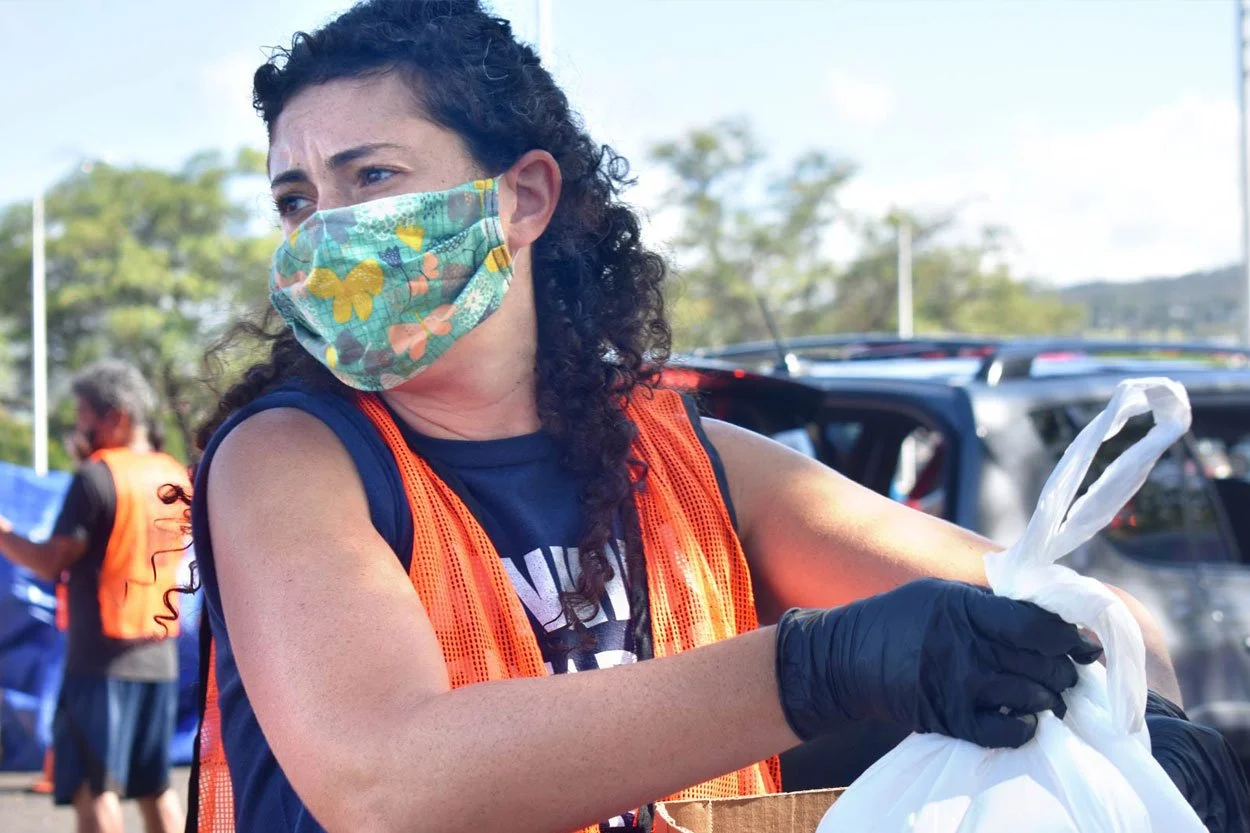“What’s your spark?” It’s a question that Diane Keeler asks her team often.
As the store manager at the Līhuʻe Walmart on Kaua‘i, Diane leads a large team of roughly 250 associates. She’s been in charge of her team for eight years and a part of the organization for more than two decades. Originally from Wahiawa, the Leilehua High School grad began her career at the Mililani Walmart in 1999. From there, she worked her way up the ranks, which ultimately brought her to the Garden Island.
“Kaua‘i is a very special place,” Diane recalls. “The aloha spirit is alive and well. You feel that energy as soon as you land on the island. Being in this community, you feel a real sense of camaraderie.”
That sense of camaraderie has fueled Diane’s commitment to volunteering, and it ultimately sparked her passion for Hawai‘i Foodbank Kaua‘i.
“Each team I’ve been on, we’ve always been really focused on volunteering. It started as a way to get to know each other, and it’s helped our group become really close,” she explains. “As I was working my way up through the channel at Walmart, we began volunteering at the Foodbank – and that’s when it really became a family affair for me. My children, my niece and nephews, as well as my grandbabies, all come to the Foodbank to volunteer now. They just love it.”
Diane has raised six children and loves finding opportunities for her whole family to volunteer together. During 2020, she and her family became fixtures at Hawai‘i Foodbank Kaua‘i’s pop-up food distributions, which helped provide emergency food assistance to families impacted by the pandemic. This experience taught her a lot, not only about volunteering but also about her community.
“Afterward, I would turn to my grandchildren, and I would say, ‘Hey, what did you learn?’” Diane reflects. “Because it’s not about rushing and putting the food in the car. No, it’s really about understanding that we’re all human. These people that we’re putting food in their cars – they’re no different from us, and they just need a little help. Volunteering during the pandemic really helped build awareness that, you know, we’re all in this together.”
Diane was raised in a big family, herself. The oldest of seven siblings, Diane grew up watching her dad work three jobs while her mom stayed home to take care of them. This experience taught her at a young age the ongoing challenge of trying to make ends meet. But even more, it also instilled a sense of gratitude that now sparks her passion to take care of others.
“We were limited to what we had due to my father working construction during a time when they were on strike,” she describes. “But I’m grateful to have grown up during this time because we were very rich in love and family and, of course, blessed with lots of delicious meals – even if it was something simple like Hawaiian Pancake. My mom would feed anyone that came to visit … They’re my reason. That’s my spark.”
Today, Diane sits on the advisory board for Hawai‘i Foodbank Kaua‘i. This role, along with her childhood memories and the lessons she has learned while volunteering, have sparked an even greater appreciation for her career.
“I always took my job at Walmart seriously, but being involved with the Foodbank has made me think differently about my mission as a manager,” says Diane. “My role is even bigger than I realized. Because, if I don’t do my job and bring in the commodities and have them available to the island – whether it be for customers or for organizations like Hawai‘i Foodbank Kaua‘i – how can our store take care of the community? It’s not just about the store now, it’s making sure we are always in a position to take care of our community.”
Several times a week, the Līhuʻe Walmart donates food to Hawai‘i Foodbank Kaua‘i. On top of that, Diane has been integral in organizing volunteer efforts, check presentations, grant opportunities and more.
“I really am grateful for my job – being able to provide customers with what they need on a regular basis – and then seeing how that also extends beyond to help the community. That means so much,” says Diane. “It is an honor to be able to do what I do not only as a professional but also as a volunteer and a person. Being involved with the Foodbank has shown me that it doesn’t matter who you are, where you are in life – we’re all making a difference.”
How very appropriate because, for Diane, it doesn’t matter who she is taking care of. She’s just happy to help take care.
Diane and her husband have made it a regular practice to take in anyone around them who needs help. Whether it is family, missionaries from their church or folks who have just come on hard times, Diane is sparking positive change for her entire community – just as she watched her parents do for her and her siblings all those years ago.
“It really makes my heart very happy to be able to take care of those in need,” Diane looks back with a smile. “I always tell them, ‘I have one rule with you. If you have no dinner or no food, you show up here. Unannounced. It doesn’t matter. I will feed you.’”







